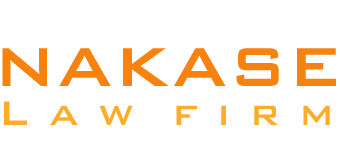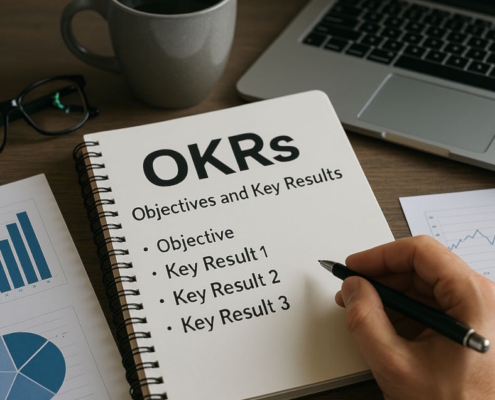What does net profit mean?
After deducting all expenses, taxes, and costs from a company’s total revenue, the remaining amount is called net profit, net income, or net earnings. As a whole, it shows how profitable the company is.
The “bottom line” refers to a company’s net profit, which is located at the very bottom of its income statement. It’s the sum that the business can use to either pay out dividends to shareholders or put back into the business.
In this article, we will go over the basics of net profit calculation, its significance, potential improvements, and analysis of net profit margin.
After deducting all of a company’s expenditures, taxes, and operational costs from its total revenue for a given time period, the remaining amount is the net profit. Following these simple steps will get you there:
First, we need to know the total revenue. This is the sum that the company made from the sale of goods and services before deducting any expenses.
To find the cost of goods sold (COGS), take the revenue and subtract it from the cost of goods sold. The cost of goods sold (COGS) is the sum of all direct expenses incurred by a business in producing its goods and services. Gross profit is the result of deducting cost of goods sold from total revenue.
Take the gross profit and subtract the operating expenses. Operating expenses are those that aren’t directly related to making a product or providing a service. Rent, utilities, and salaries are some examples.
Take the interest and taxes paid by the business and deduct them. After deducting operational costs and adding up all of the revenue, you’ll need to account for non-operating costs and revenues like depreciation and amortization.
Here is the formula to calculate the net profit:
Net Profit = Total Revenue – COGS – Operating Expenses – Interest – Taxes – Other Expenses + Other Income
To illustrate the point, consider a business with $500,000 in revenue and $350,000 in expenses; the resulting net profit would be $150,000.
What do you do with net profit?
A company’s net profit tells you a lot about its financial well-being, performance, and growth prospects. In this context, “stakeholders” refers to both internal and external parties.
When evaluating a company’s financial health, net profit is one of the most important metrics to look at. It reveals whether or not a company is making enough money to pay all of its bills and then some. Maintaining a positive net profit over time shows stability and room for expansion, whereas falling into the red indicates financial trouble.
When deciding whether to pay off debt, invest in new projects, grow the company, or pay dividends to shareholders, net profit is a key metric to look at. Executives look to the bottom line when planning for the future and allocating resources. Investors and other stakeholders look at a company’s net profit to get a sense of how profitable, efficient, and well-managed it is. Investors frequently look for investment opportunities by comparing the net profits of different companies.
Accurately assessing net profit is essential for tax planning and compliance purposes, as it forms the basis for calculating corporate income taxes.
What makes operating profit, gross profit, and net profit different
Each of the three profitability metrics—gross profit, operating profit, and net profit—represents a distinct component of a business’s revenue. Here’s how to calculate these numbers and what they represent.
1. Gross profit
After subtracting the direct expenses incurred in producing the goods or services (COGS), the remaining amount is the gross profit. The cost of goods sold (COGS) factors in things like production overhead, raw materials, and direct labor.
Gross profit is a measure of how well a business is able to control its production expenses.
To find the gross profit, subtract the cost of goods sold from the total revenue.
2. Operating profit
After subtracting operational expenses from the gross profit, the remaining profit is known as operating profit. Payroll, real estate, advertising, and R&D are all examples of operating expenses that are integral to running a firm.
Operating profit is a measure of how efficiently a company runs its main business operations.
To find the operating profit, subtract the operating expenses from the gross profit.
3. Net profit
A company’s net profit is its remaining profit after subtracting all expenses, including those that aren’t directly related to operations like taxes and interest.
A company’s net profit is a measure of its overall profitability. Capital available for distribution or reinvestment is the total amount of money that a company has on hand. You can get to the net profit more quickly if you know the operating profit and nonoperating expenses of the business. If that isn’t the case, then figure out what goes into operating profit and what goes into nonoperating expenses.
Calculations:
The equation for net profit is as follows: total revenue minus cost of goods sold minus operating expenses minus interest minus taxes minus other expenses plus other income.
Operating profit minus non-operating expenses equals net profit.
Example calculations for profit
Let’s say that a business makes and spends the following amounts of money:
Total revenue: $500,000.
Cost of goods sold: $200,000
Expenses for operations: $150,000
Total non-operating costs and taxes: $50,000
The profit figures for the company would be:
$300,000 in gross profit
$150,000 in operating profit
$100,000 in net profit
Tips for increasing net profit
The success of a business in the long run depends on its net profit. Whether you’re a startup or an established company, these tactics can help you increase your bottom line.
1. Optimizing pricing strategies
Use sophisticated analytics to set prices that change in response to supply and demand, rivalry in the market, and consumer actions in real-time; this is known as dynamic pricing.
A change from cost-plus to value-based pricing would be to base prices not on actual costs but on what the consumer believes the product or service is worth.
2. Application of technology
Use algorithms based on artificial intelligence and machine learning to automate process optimization for your company. Areas like inventory control and supply chain management can benefit from this since it can cut down on waste.
Find ways to save money without lowering product quality or disappointing customers by using predictive analytics to find areas where your company can save money.
3. Diversification of revenue streams
Exploring untapped geographic or demographic niches with the help of market segmentation and analysis tools can help you find more lucrative opportunities with lower levels of competition.
Expanding your product line means coming up with new products or services that complement your current offerings and make better use of your current customer relationships in order to boost your average revenue per user (ARPU).
4. Efforts to retain customers
Personalized offers and rewards may boost customer lifetime value, so it’s important to build sophisticated loyalty programs based on data.
To optimize the customer experience, put money into making it better by listening to and acting on consumer feedback and data about their actions. This will increase satisfaction and decrease customer churn.
5. Managing finances strategically
The goal of tax optimization is to reduce taxable income as much as possible by making strategic use of tax deductions, credits, and international tax planning tools.
Make changes to the debt-to-equity ratio in order to optimize the capital structure and reduce the cost of capital. Refinancing at more favorable interest rates or issuing bonds when the timing is right are two examples.
6. Innovations in the supply chain
Renegotiating contracts and consolidating suppliers can help lower cost of goods sold (COGS) by improving pricing and terms.
Implementing a just-in-time (JIT) inventory system can help cut down on holding costs and waste without jeopardizing production delays.
7. Business sustainability programs
Put money into tools and methods that cut down on energy use to save money in the long run.
To attract a more eco-conscious customer base and potentially qualify for government incentives, businesses should switch to sustainable sourcing practices.
8. Strategic mergers and acquisitions
To swiftly increase your market share, get access to new client bases, and obtain economies of scale, consider acquiring complementary businesses. Combining forces with complementary businesses can increase market share, strengthen position in the industry, and create synergies.
How to evaluate the net profit margin
You can learn a lot about the financial well-being of your company from its net profit margin. To gain insight into this statistic, follow these steps.
To begin, use the formula below to determine the net profit margin. To find the net profit margin, divide the net profit by the total revenue and multiply the result by 100. After deducting all costs from revenue, this formula will give you the percentage that represents the amount remained as profit.
Compare your net profit margin to industry standards or benchmarks to get a sense of what it means. The average margins of different industries vary. The retail sector, for instance, often enjoys lower profit margins than the systems software sector. If you want to know how your company is doing compared to its competitors, this comparison can help you out.
Look at the net profit margin’s pattern over several time intervals (e.g., quarterly, yearly). An increase in profit margins over time might be an indication of better management of costs, more effective pricing, or more efficient operations. Reduced profit margins, on the other hand, might be a sign of rising expenses, price competition, or inefficient operations.
Think about things like economic cycles, changes in regulations, and market saturation as external factors that could affect net profit margins. For example, retail margins might take a hit if consumers cut back on spending during an economic downturn.
Investigate the operational details further by dissecting the income statement. Think about how alterations to the cost of goods sold, operational expenditures, and other expenses affect the net profit margin. If these areas are improved, the margin can increase.
Think about the net profit margin and how different financing strategies might influence it. As an example, one way to improve the net profit margin is by reducing interest expenses through leverage or refinancing existing debt at lower rates.
To learn how changes in company strategy or market circumstances could affect the net profit margin, run scenario and sensitivity analyses. One way to do this is to model various pricing strategies, cost management plans, or expansion goals for the market to see how they could affect margins.
Consider the cross-functional impacts by linking net profit margin analysis with other key performance indicators (KPIs) like operating cash flow margins, return on assets (ROA), and return on equity (ROE). This general view makes it easier to understand the bigger financial effects and how well the business is running.
If possible, break down the net profit margins by company segment or region to see where you’re excelling and where you’re falling short. This can help identify which markets or segments are contributing to or detracting from overall profitability.
Make strategic suggestions to increase net profit margins based on the results of the study. Efforts to diversify product offerings, increase market share, decrease costs, or alter prices might fall under this category.
Obstacles and possible solutions for increasing net profit
Many obstacles stand in the way of maximizing net profit. Here are some typical problems and solutions that businesses encounter.
1. Increases in expenses
Raw material, labor, and operational expense price increases can eat into profit margins.
What to do:
- Review and analyze expenses on a regular basis to find places to save money using a cost-benefit analysis.
- Improve your terms with suppliers or look into other suppliers by negotiating with them.
- Maximize efficiency and cut down on waste by optimizing your processes using lean manufacturing or Six Sigma.
2. Pressure on prices
Pricing pressures caused by oversaturation or intense competition can cut into profit margins.
What to do:
- Price items according to their perceived value to consumers rather than their actual cost. This pricing strategy is known as value-based pricing.
- A product or service can stand out from the competition and command a premium price tag by differentiating itself through enhanced features.
- Make use of data analytics and AI tools to implement dynamic pricing, which involves adjusting prices in response to changes in market demand and competition.
3. Wasted resources
Inefficient processes and operations can increase expenses and decrease output.
What to do:
- To optimize operations, invest in advanced technologies such as automation and AI.
- Reengineering processes entails looking at current workflows closely in order to find and remove any unnecessary steps or bottlenecks.
- Training and development programs are an investment in the knowledge and abilities of your employees.
4. Excessive levels of debt
High-interest expenses, caused by carrying too much debt, can cut into net profit.
What to do:
- Refinancing or reorganizing debt can help you get better terms and lower interest rates.
- Make a list of all your debts, and pay off the ones with the highest interest rates first.
- Consider seeking equity funding in order to lessen your dependency on debt financing.
5. Poor oversight of financial resources
Liquidity issues, caused by mismanaged cash flow, make it difficult to pay bills.
What to do:
- Set up mechanisms to track and predict future cash flows.
- Strengthen credit policies, expedite collections, and provide discounts for prompt payments.
- In order to free up capital and lower holding costs, implement a just-in-time inventory system for inventory management.
6. Problems with regulations and compliance
Expenses and penalties can mount when dealing with intricate regulatory landscapes.
What to do:
- To avoid fines and make sure everything is in order, it is a good idea to do compliance audits.
- To keep up with the latest regulations and best practices, it is advisable to consult with professionals in the fields of law and compliance.
- Compliance management software is an automation tool that can automate compliance procedures and cut down on manual labor.
7. Changes in the market
Demand and profitability are susceptible to economic and market trend fluctuations.
What to do:
Keep an eye on customer habits and market tendencies with the help of sophisticated analytics software.
- Reduce reliance on any one market or product by diversifying your product lines or services.
- Create a business model that can easily adjust to new circumstances in the market.
8. Poorly performing goods or services
It is possible that some offerings will not bring in enough money to cover costs.
What to do:
- Evaluate the product by looking at how well it worked and what customers thought of it.
- Plan to phase out or stop selling products that aren’t doing well.
- Spend money on R&D to make existing products better or to make brand new ones that people want.
9. Marketing tactics that don’t work
A low rate of client acquisition and retention can be the result of ineffective marketing strategies.
What to do:
- Draw on data analytics to craft ad campaigns that speak directly to your target demographic.
- To increase exposure and interaction, employ digital marketing strategies such as search engine optimization (SEO), pay-per-click (PPC), and social media.
- Set up a CRM system to increase interaction with and loyalty from current customers.
10. Problems with talent management
Production and earnings might take a hit if there is a lot of staff turnover or a shortage of competent workers.
What to do:
- Develop your talent pool by funding training and development programs for current and future employees.
- To entice and keep the best employees, you need to pay them a competitive wage and provide them with generous benefits.
- Motivate your staff by providing them with chances for professional growth and acknowledgment as you foster a supportive work environment.






























